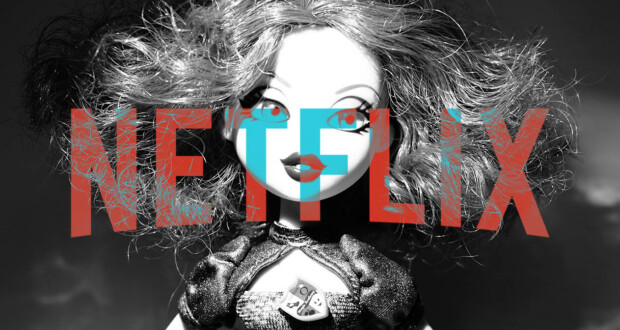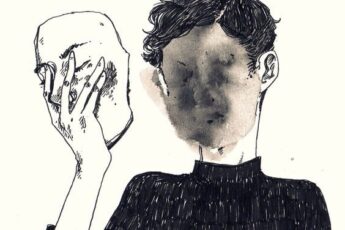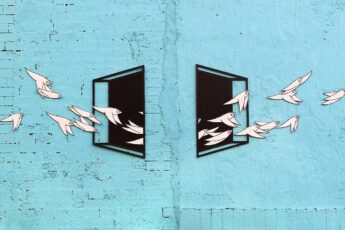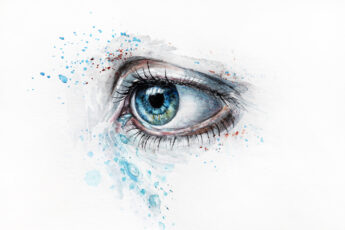
CUTIES ON NETFLIX: TWERKING TOWARDS CORPORATE PAEDOPHILIA
In a world of moral subjectivity, few things unite people wholesale like the fight against the sexualisation of children. In many ways, this is the last pillar of human decency to fall before the house collapses altogether. You don’t have to be ‘conservative’, Muslim, or even vaguely religious to recoil at the idea of bringing sex and titillation into the arena of childhood. All reasonably minded people recognise the obvious harm that these issues invite to children, who are already one of the most vulnerable groups in society.
So, as people are prone to do in this age, resistance to the film led to #CancelNetflix being the top trending topic on Twitter last week. A petition on Change.org amassed over 600,000 signatures and is well on its way to its intended one million target.[1] A US Senator penned an open letter to Netflix asking for immediate action to be taken for sexually exploiting and therefore endangering children.[2] Though Netflix originally apologised for a sexually inappropriate poster used in the promotion of the film, it has doggedly defended the film as a ‘social commentary’ and has instead encouraged critics to watch it.[3]
This film provides us with a number of different layers to unpack:
The overused traditional immigrant vs. secular liberation trope
What do poor Black Muslim immigrants conjure up for the mainstream mind? Claiming to represent her own community as a child of Senegalese immigrants, Maïmouna Doucouré, the director of Cuties, did not waste any time in dredging up every cliché in the book. The protagonist Amy is feeling suffocated by her mother’s traditional values and her father’s secret polygyny. Her mother is hapless and resigned to her unhappy lot in life. Amy lacks any agency as a female and dreams for the freedom and liberation that secular French society enjoys. Her parents’ native culture is restrictive, backwards, and oppressive. On the flipside, mainstream society is fun, open, and exciting. Four legs good, two legs bad.
The flagrant sexualisation of children
This is the heart of the backlash against the film. We are not talking about children merely in suggestive clothing – we are talking of gyrating hips, twerking, accentuating body parts that pre-pubescent children have not even developed, and enough titillation to get even the most seasoned child abuser hot under the collar.
The film has children talking about sex and rape (albeit with misconceptions), playing with a used condom in a park, filming a boy’s genitalia while he is urinating, and the lead character Amy posting a photo of her own private parts on social media to compensate for ‘losing a fight’. Scenes include a ‘girl gang’ of 11-year-olds flirting with boys online and offering to let the boys touch their breasts. There’s also a child undressing for a grown man in exchange for his phone. These child actors also indulge in vulgar language, with the script generously peppered with regular expletives. The lead character Amy will do just about anything to fit in.
“It’s art / a social commentary”
This one is the defence used by Netflix and many others ad nauseam to defend much extremely problematic output on the public stage. Piercing, intelligent, and purposeful social commentary is essential for societies who want to self-reflect and grow. Social commentary can and should be done through all forms of art; Banksy’s internationally recognised graffiti rests entirely on his gritty social commentary for example. However, there are boundaries of decency and the duty to protect vulnerable groups which must – without exception – be held above any so-called ‘right to represent’ reality through art. Social commentary that focuses on peer pressure, identity crises in immigrant children, and the lure of social media have previously been done well while preserving basic boundaries of decency.
Do we need to see skimpy clothing and children simulating sexual acts for us to wake up to the sexualisation of children? Should we livestream rape to show everybody the dangers that women can be put in? Should we release graphic videos of children being physically abused to demonstrate the extreme harm they suffer?
Of course not. There are standards of decency, honour, and appropriateness that cannot be pushed aside in the pursuit of a deified-level of ‘artistic expression’. We live in the real world, and we must apply common sense and forethought to what makes it to the public realm.
When social media star Logan Paul stumbled upon a dead body in the forest in what was an apparent suicide, he wasted no time in vlogging the experience. He later faced an intense backlash, with attempts to have him ‘cancelled’ from all social media platforms.[4]
Humans innately recognise decent conduct and fair boundaries, no matter how clouded over this fitri instinct may appear. When you feel reviled by certain behaviours, you should be grateful that this instinct is still strong within you. You should not feel ashamed of it, apologise for it, or worse, ‘intellectualise’ the need for the indefensible using covers like “It’s art!” and “It’s social commentary!”
In that vein, we hear:
- “Playboy was created to celebrate female aesthetics!”
- “A stripper pole is simply an exercise pole in the right hands!”
- “Women indulge in foot binding, high-heeled stilettos, toe-shortening operations, corsets, weight-loss surgery, dieting, cosmetic genital surgery, lunchtime Botox, sizzling in a tanning bed, and anti-ageing products purely for themselves!”
Let’s be real and call things what they are.
Sexualisation isn’t something new
Though this piece is premised on Cuties, the issue of sexualisation is bigger than any one film, industry, or culture. Sexualisation is nothing new. We all know that sex sells. We have seen how the secular capitalist mindset uses sexualised images to sell any possible product, from flea repellents to drain gutters. There is no better way to shift stock than to put it in the hands of a bikini-clad woman on a billboard. The jury is still out on which of the two ends up becoming the product.
We have become desensitised to this level of sexualisation to an extent, but now we are invited to go further down the rabbit hole. If sex sells, why not crank it up a notch by making our target market younger? Surely the most efficient way of having women committed to being sexualised objects – and men treating them as so – is to start young. Grooming children into these roles when they are at their most formative and impressionable years means that half the job is already done. They will be passive and obedient consumers to industries that rest on sexualisation for easy profit.
Now we have a “Na! Na! Na! Surprise” toy that is dressed in suspenders, lacy underwear, and lingerie that is revealed when she is dipped in cold water.[5] Hasbro’s Poppy Trolls dolls were pulled from sale after a parent discovered a secret button between the dolls’ legs that made ‘gasps’ and ‘giggle’ noises when pressed.[6]
Bratz dolls were condemned by the National Society for the Prevention of Cruelty to Children, which opened an inquiry into increasing levels of sexual imagery in goods aimed at children.[7] LOL dolls are dressed in fishnet stockings, as well as bondage and fetish wear. Both the Bratz and LOL dolls are aimed at children aged 3+. Only after intense consumer pressure did WHSmith discontinue their Playboy-branded stationary range aimed at children.[8]
Sexualised culture generally, and the sexualisation of children in particular, is harmful to boys and girls equally, as well as to men and women. It is not a problem affecting only females; it takes a wholesale buy-in from all social actors in a community for it to be successful.
The known impact of sexualisation on children
The sexualisation of children teaches girls that their priority is to be more physically attractive to a man. For boys, this encourages the viewing of girls as sexual objects, because that is what they are being trained to become.
Educationalists report that the pressure of sexualisation is affecting girls’ school-work and academic performance, leading to many girls dropping out of the school system.
The sexualisation of children is proven to have an immensely negative impact on the psychological development of children, particularly on self-esteem, body image, and their understanding of sexuality and relationships. Sexualisation contributes to girls defining their self-worth and popularity in terms of sexual attractiveness. Early sexualisation has been found to contribute to the development of abnormal eating behaviours, as well as depression and a lack of sexual boundaries later on in life, thus leaving children open to exploitation and abuse.[9]
Why is sexualisation so wildly successful?
Sexualisation is so embedded in our society because it ties together a number of crucial human and social failures:
- The commercial element: It is no secret to any advertiser that the sexualisation of women in particular is hugely profitable; their objectification is therefore a commercial no-brainer. There has always been an awareness and discomfort around this fact, but corporate interests are just too strong to give up their best motivator.
- Using sexualisation appeals to the lower nafs: Sexualisation takes a natural, normal, and necessary human instinct out of the appropriate boundaries and plasters it on a public stage. It appeals to our base desires and so without active resistance, it’s all too easy and natural a trap to fall into.
- It is coupled with normalisation: When the reality TV show Keeping Up With the Kardashians ended its 14-year ratings-busting run last week, many lamented that the damage was already done. The show had set the scene for influencer culture, the normalisation of cosmetic enhancement, disposable relationships, the pursuit of fame via notoriety and social media, and an obsession with body image and open sexualisation. They became the First Family of Reality TV where indulgence in scandal and gossip was not only normalised, but actively encouraged and profited from.[10] The British billionaire businessman (and Muslim) Mahmud Kamani, who founded the fashion retailer Boohoo, has come under fire for his company’s highly sexualised advertising aimed at younger audiences.[11] The advertisements have been criticised for being socially irresponsible and objectifying women, but the company says they are simply ‘part of the times’.
When behaviours such as these are innocuously brought into the homes and travelling devices of the masses, a desensitising effect becomes prevalent on a social level. This becomes the springboard to open sexualisation being accepted as a norm.
Where do we go from here?
As Muslims, one of the first things we must come to terms with is that sexualisation in society is our problem too. It is easy to believe that since we have a dīn focused on modesty and hayā’, this scourge is the problem of the ‘decadent West’. However, we should not forget that we are rooted in the West and raising children within the same societies. Regardless of the lengths one goes to in shielding children from the worst of the effects of sexualisation, Muslim-majority countries and Muslims in non-Muslim countries will face the harm of sexualised society in some form at some point. The fact that the main character in the film Cuties was a Muslim girl goes to show the plausibility of this scenario.
Parents have a heavy responsibility to both their sons and daughters. For our sons, we need to invest in raising men who understand the place and role of sex within marriage, appropriate boundaries between genders, and the honour and decency that should govern interactions with and attitudes towards women. Our sons should understand how to defend women. They should see how sexualisation effectively dehumanises our daughters and relegates them to objectified commodities. Our sons need to understand the value of hayā’ in all its forms, and they should believe that this applies to men just as strongly as to women.
Our daughters need to understand the essence of modesty and revive a concept that is scoffed, scorned, and stamped out of social consciousness altogether. Our daughters need to have their closest family relationships mirror the love, security, and self-worth that they deserve. They must understand that their value is higher than their physical bodies, and that modesty is a protection for them on multiple fronts.
Films like Cuties will come and go. Bratz dolls will soon have all their bondage gear washed off their plastic frames. But the next scandal and storm will be here soon. Timeless values are not always trendy, but truth was never meant to be fashionable. Truth was meant to be the optimum way for humans to realise their full potential during their short time here on Earth. Sexualisation is a reality within all human societies to varying degrees. As with all challenges, we rise to it and demonstrate how the sincere and holistic implementation of Islam elevates human beings to the highest degree that they deserve to be.
Notes:
[1] https://www.change.org/p/netflix-i-want-netflix-to-remove-the-new-movie-cuties-as-it-promotes-child-pornography [2] https://twitter.com/HawleyMO/status/1304503913606000640 [3] https://variety.com/2020/digital/news/netflix-defends-cuties-against-sexualization-young-girls-1234766347/ [4] https://www.theatlantic.com/technology/archive/2018/01/a-social-media-stars-error/549479/ [5] https://www.dailymail.co.uk/news/article-8681879/Father-accuses-Tesco-selling-sexualised-dolls-children-buying-Na-Na-Na-Surprise-toy.html [6] https://au.news.yahoo.com/troll-doll-pulled-from-production-over-button-on-genitals-that-giggles-110201767.html [7] https://www.scotsman.com/news/girls-aged-5-sexualised-toys-bratz-dolls-msps-told-2467304 [8] https://www.dailymail.co.uk/news/article-1141222/WH-Smith-ditches-Playboy-stationary-watchdog-slams-high-street-putting-porn-playground.html [9] https://www.generationnext.com.au/2010/04/the-impact-on-children-of-sexualisation-in-the-media/ [10] https://www.telegraph.co.uk/tv/0/kardashians-turned-celebrity-something-monstrous/ [11] https://www.drapersonline.com/news/the-perils-of-highly-sexualised-advertisingThis article originally appeared here.



